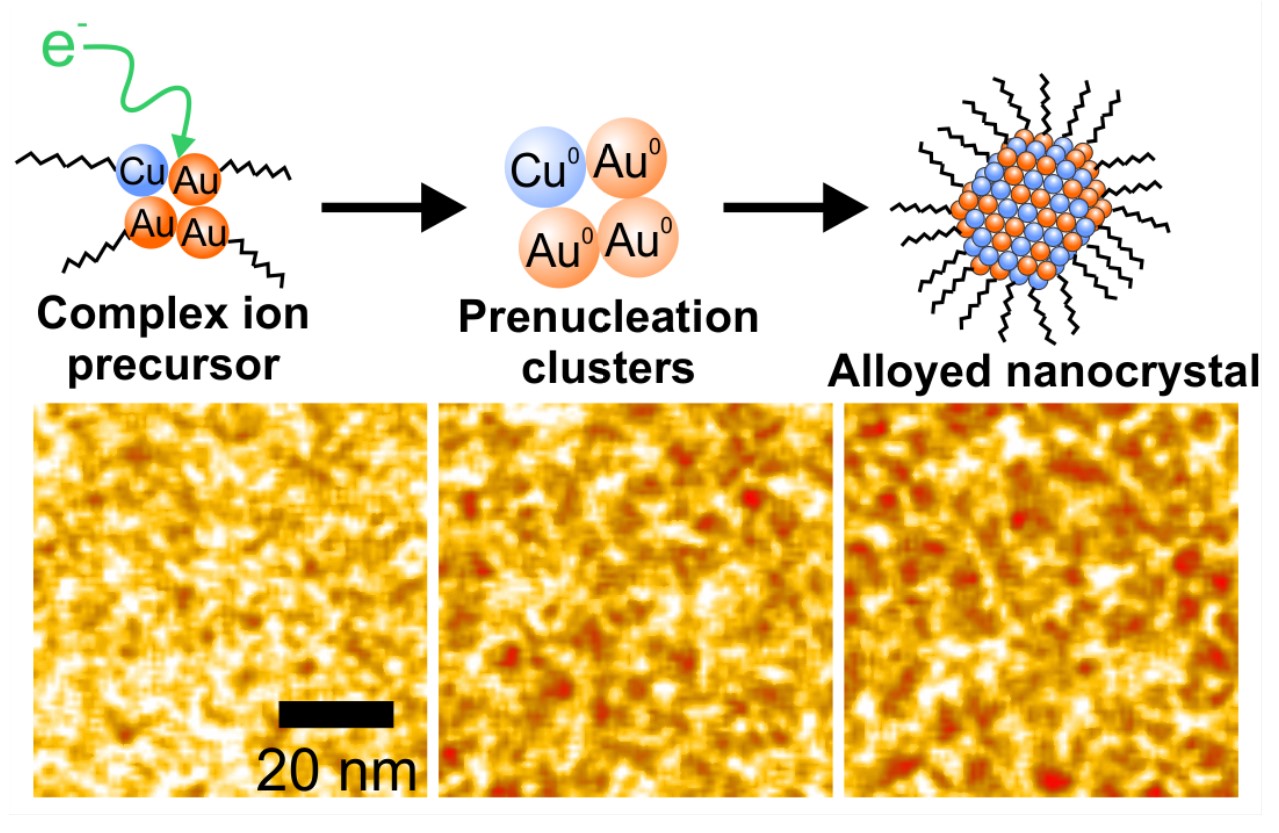Nanoscale Imaging Method Offers Insight into Alloyed Nanoparticle Synthesis
Catalysts, often metal nanoparticles, are involved in the production of over 80% of commercial products such as plastics, fuels and pharmaceuticals. Computational methods aid in designing nanoparticle catalysts consisting of mixtures of metals, called alloyed nanoparticles, with high reaction activity and selectivity. However, producing alloyed nanoparticles with arbitrary composition in the lab do not yet exist. Indeed, the fundamental chemistry of alloyed nanoparticle synthesis remains an enigma. To that end, a research team at the University of Maryland (UMD) led by Taylor Woehl, an assistant professor in the Department of Chemical and Biomolecular Engineering (ChBE), applied a novel method – in situ liquid phase transmission electron microscopy (LP-TEM) synthesis – allowing a closer look at the molecular and nanoscale processes that govern how metals mix into alloyed nanoparticle during wet chemical synthesis. Mei Wang, a ChBE Ph.D. Student, served as first author on the study, published in ACS Nano. "We observed the formation of nanoparticles made of gold and copper – promising catalysts for converting CO2 into valuable organic molecules – in real time at the nanometer length scale," Wang said. "With this method, the synthesis of nanoparticles is achieved by irradiating a liquid precursor with high energy electrons to simulate the conditions of wet chemistry. We found electron synthesis conditions that closely mimicked wet chemical synthesis, which was surprising given that the radiation dose the sample receives is many times greater than in a commercial nuclear reactor." By discovering these conditions, the authors ensured that what they saw with LP-TEM was representative of what occurs during wet chemical synthesis on the benchtop. Reaction simulations showed that organic ligands in the solution, normally used to control the size and stability of the nanoparticles, protect the reaction solution from being damaged by the high energy electrons. A key observation in the study was that the presence of an organic ligand was critical to combining gold and copper into well mixed alloyed nanoparticles. "We found that the ligand enabled alloy formation by covalently bonding to gold and copper to form complex ions," said Woehl. Atomic resolution imaging and mass spectrometry showed that the complex ions were converted to intermediate species in the synthesis reaction, called prenucleation clusters. We found these clusters, each consisting of a few gold and copper atoms, were critical to forming an alloy." The intermediate species then assembled together into nanocrystals with a similar composition. This nanocrystal formation pathway is distinct from the classical picture of single atoms congregating into a nanoparticle. The authors found that the organic ligands play an important secondary role of encouraging the formation of prenucleation clusters containing both gold and copper atoms. These findings suggest that control over metal cluster intermediates is the key to synthesis of alloyed nanoparticle catalysts. For more information: Wang, M., Leff, A.C., Li, Y., Woehl, T.J. (Jan 2021). Visualizing Ligand-Mediated Bimetallic Nanocrystal Formation Pathways with in Situ Liquid-Phase Transmission Electron Microscopy Synthesis. ACS Nano. DOI: 10.1021/acsnano.0c07131
February 5, 2021 Prev Next |


